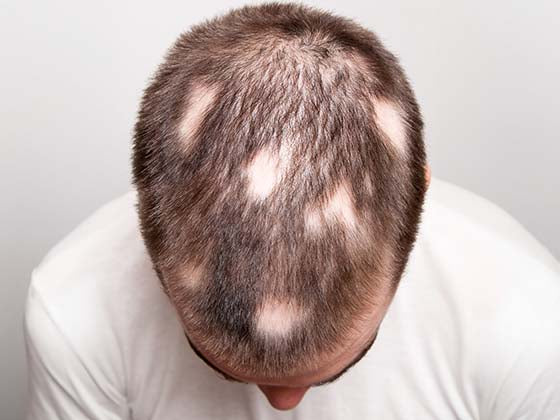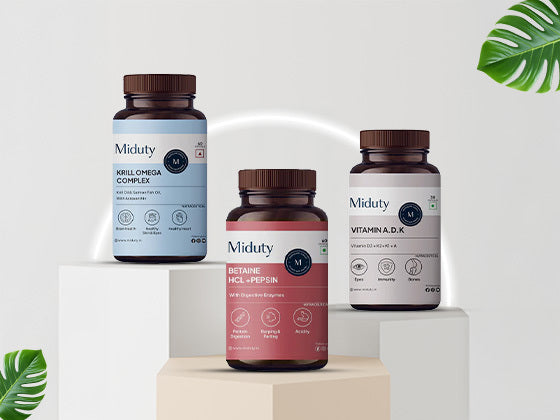- Protein Filler
- Balancing Protein & Moisture
- Signs of Protein Deficiency
- Signs of Dehydrated Hair
- Risk of Overuse
- Choosing The Hair Treatment
- Moisturizing Hair Products
- Customised Hair Care Regimen
- FAQs
Bleaching takes away the natural proteins from hair, making it brittle, parched, and weak. Bleached hair's protein filler is an essential treatment that restores depleted keratin, building up hair shaft strength, and repairing damage. By closing gaps in the cuticle, it increases elasticity, minimizes breakage, and enhances water retention. Whether applied prior to coloring to enhance dye uptake or used as a post-bleach repair treatment, protein fillers restore strength, smoothness, and luster to make overprocessed hair healthier and more durable.
Understanding Protein Fillers and Moisture: Key Elements for Bleached Hair Recovery

Bleached hair also suffers structural damage, losing both protein and water, which are necessary for its strength and flexibility. To recover its health, it requires a blend of protein fillers and moisture-balancing treatments.
-
Protein fillers repair keratin bonds, rebuilding weakened strands and preventing breakage.
-
Hydrolyzed proteins such as keratin, collagen, and silk penetrate the hair shaft to fix damage from the inside out.
-
Excessive use of protein treatments can render hair stiff and brittle, making balancing with moisturizing essential.
-
Deep conditioning with humectants including glycerin and hyaluronic acid rehydrates and softens.
-
Argan and coconut oil seal in moisture to prevent further drying out.
-
Leave-in treatments and heat protectants form a protective barrier against environmental stressors.
-
Trims every few weeks eliminate split ends, promoting healthier growth and reducing further breakage.
-
Low-manipulation styles minimize stress on weak strands, facilitating recovery.
-
The use of sulfate-free shampoos assists in balancing moisture content without removing natural oils.
-
Alternating between hair care with protein and moisturization is the crucial practice towards repairing hair integrity.
To recover from bleach damage, patience and the proper balance of protein and moisture are essential. By adding targeted therapy and hair care with gentle practices, you can progressively restore hair strength, elasticity, and luster.
What is a Protein Filler and How Does It Help Bleached Hair?

A protein filler is a hair treatment that restores lost proteins, most importantly keratin, to mend and fortify damaged hair. It fills in porous spots and gaps in the hair shaft, usually created by chemical treatments and bleaching. It Helps Bleached Hair in the following ways:
1. Restores Keratin: Replaces lost structural proteins, fortifying fragile strands.
2. Decreases Porosity: Fills porous damaged cuticles, leaving hair smoother and more resistant to moisture loss.
3. Helps Prevent Breakage: Fortifies the hair shaft, lowering split ends and brittleness.
4. Increases Elasticity: Gives hair greater flexibility, so that it does not snap when tension is applied.
5. Prepares Hair for Coloring: Provides a smooth surface area, enabling optimum color uptake and durability.
Protein fillers are a necessity to keep bleached hair healthy and resilient. But they must be used in moderation with moisturizing treatments to keep the ideal balance and avoid stiffness.
The Role of Moisture in Restoring Bleached Hair

Bleaching removes natural moisture from hair, leaving it dry, brittle, and breakable. To restore its elasticity and strength, moisture must be replenished. Hydration smooths the cuticles, repairs damage, and enhances hair health.
1. Deep conditioning treatments lock in moisture, avoiding over-drying and breakage.
2. Hyaluronic acid, glycerin, and panthenol retain water within the hair shaft.
3. Leave-in conditioners and serums such as Milk Shake Leave-In Conditioner offer ongoing hydration and protection.
4. Employing sulfate-free, moisturizing shampoos like Root Deep Sulphate Free Shampoo avoids additional moisture evaporation.
5. Argan, coconut, and jojoba oils lock in moisture and provide luster.
6. Protein-moisture balance is essential—excess protein without moisture can lead to stiffness.
7. Heat styling must be minimized to avoid additional dehydration.
8. Sleeping on a silk pillowcase minimizes friction and holds moisture overnight.
9. Sufficient water intake and a nutrient-based diet support hydration of hair from the inside out.
10. Trims every six to eight weeks remove split ends, avoiding additional damage and moisture loss.
Rehydrating bleached hair needs regular maintenance and proper products. With the right moisture, hair softens, shines, and strengthens, lessening the long-term impacts of chemical damage.
Finding the Balance Between Protein and Moisture

Bleached hair is weakened and needs to have a precise balance of protein and moisture in order to have strength, elasticity, and general health. Excessive protein can cause hair to become stiff and break, and excessive moisture causes it to be limp and weak. Finding the right balance will provide maximum hair restoration and protection.
-
Protein treatments fortify the hair structure by rebuilding keratin bonds that are broken by bleaching.
-
Excess protein without moisture causes hair to be brittle and wiry.
-
Moisture treatments replenish moisture, enhancing elasticity and softness.
-
Excess moisture with no protein weakens hair, causing over-stretching and breakage.
-
Taking turns with protein and moisture treatments keeps balance healthy.
-
Glycolic acid, hydrolyzed keratin, and silk proteins strengthen hair shafts.
-
Hydrators such as aloe vera, hyaluronic acid, and glycerin retain vital moisture.
-
Application of leave-in proteins and moisturizing masks like FCL Strengthening Hair Mask eliminates imbalance.
-
Low-porosity hair can require lighter proteins, whereas high-porosity hair responds well to deeper moisturizing.
-
Systematic testing of hair texture and elasticity ensures when to modify treatments.
Proper protein-moisture balance is the key to maintaining healthy, smooth, and manageable bleached hair. Knowing how your hair requires treatment and modifying treatments accordingly can avoid long-term damage and make your hair more resilient overall.
How to Determine If Your Bleached Hair Needs Protein or Moisture

Bleached hair experiences profound structural alterations, tending to leave it dry, weak, and brittle. Yet, all damage is not created equal—some hair is protein-deficient, while others lose moisture. Knowing whether your hair requires protein or moisture is critical to repair and maintenance success. Protein will repair and build up damaged strands, while moisture will restore softness and moisture. Diagnosing the proper treatment maintains your hair in a healthy, robust, and less brittle state. By determining the condition of your hair, you can design a well-balanced regimen that will foster strength and moisture.
Signs Your Bleached Hair is Lacking Protein

Bleached hair requires protein to hold its shape and durability. If protein levels are insufficient, hair is weakened and vulnerable to damage. Knowing the signs of protein loss will enable you to regain strength and stop breakage in its tracks.
-
Hair is too soft, limp, and lacks body.
-
Breakage is greater, particularly when brushing or styling.
-
Strands overstretch before breaking rather than bouncing back.
-
Hair is frizzy and has no definition.
-
Loss of elasticity, causing hair to be harder to style.
-
Split ends and strands that thin frequently.
-
Hair becomes weak and soggy when wet.
-
Trouble maintaining curls or styles, since hair gets too soft.
-
Tangling more frequently and trouble untangling knots.
-
Hair soaks up water but dries just as quickly.
If your hair that has been bleached exhibits these symptoms, adding protein treatments will assist in restoring its structure. Balancing protein and moisture is key to regaining strength, flexibility, and overall health of the hair.
Indicators That Your Hair Needs More Moisture

Proper moisture levels are required to keep bleached hair healthy and manageable. Dry, brittle, and easily damaged hair occurs when hair does not have sufficient moisture. Detection of the moisture deficiency at the early stage may prevent other hair issues.
-
Hair is rough, coarse, or straw-like when touched.
-
Higher frizz and flyaways caused by dehydration.
-
Over-drying, causing the hair to become dull and lifeless.
-
Easily tangled and hard to detangle hair.
-
Strands become crunchy or stiff rather than soft and bouncy.
-
Hair snaps when stretched, demonstrating poor elasticity.
-
A dry, itchy, flaky scalp caused by dehydration.
-
Struggle to absorb and hold water during shampoos.
-
Ends become dry and brittle and get split ends frequently.
-
Hair takes forever to soak in styling products but remains dry.
If your hair shows these symptoms, the addition of hydrating treatments such as deep conditioners, leave-ins, and moisturizing ingredients can restore its softness, shine, and elasticity.
Overuse of Protein or Moisture: The Risks

Balancing protein and moisture is critical in keeping bleached hair healthy. Too much of either can create unwanted hair problems, so it is important to be aware of the risks and modify your routine as necessary.
1. Risks of Protein Overload
-
Hair is stiff, dry, and too rigid.
-
More breakage due to the absence of flexibility.
-
Strands break easily rather than stretching.
-
Hair is rough and hard to style.
-
Decreased capacity to hold moisture, causing more dryness.
2. Risks of Excessive Moisture
-
Hair is too soft, limp, and weak.
-
Strands become mushy or gummy in wet conditions.
-
More trouble holding styles or curls.
-
Hair over-stretches before breaking.
-
More prone to tangling and breakage.
To prevent these problems, balance protein and moisture is necessary. Observe the texture and elasticity of your hair and adjust treatments accordingly for healthier, stronger strands.
Choosing the Right Hair Treatment: Protein Fillers vs. Moisturizing Products for Bleached Hair

Bleached hair needs a balance of protein and moisture to remain strong, smooth, and resistant. Selecting the correct treatment is based on what your hair needs—whether it's without structure or moisture. Knowing the distinction between protein fillers and moisturizing treatments will enable you to restore your hair's strength effectively.
1. Protein Fillers: Strength and Repair
-
Best suited for weak, brittle, or severely damaged hair.
-
Reconstructs keratin bonds destroyed during the bleaching process.
-
Reduces breakage by strengthening hair structure.
-
Enhances elasticity, averting overstretching.
-
Ideally used periodically to prevent protein buildup.
-
Arrector HDS+ Hair Density Serum, Anaboom Pro Advanced Hair Growth Serum, and New La-Matisse Hair Revitalizing Serum are protein rich.
2. Moisturizing Products: Hydration and Softness
-
Crucial for dry, frizzy, or rough-textured hair.
-
Implies hydration to revitalize softness and ease of handling.
-
Deters tangling, flyaways, and brittleness.
-
Averts dehydration and loss of moisture from outside sources.
-
Can be used regularly for constant hydration.
-
Moroccanoil Moisture Repair Conditioner, Moroccanoil Moisture Repair Shampoo and Olaplex 4-in-1 Moisture Mask provide ample moisture to the hair.
For best results, evaluate the condition of your hair and switch treatments accordingly. If your hair is brittle and snaps when touched, a protein filler will fortify it. If it's dry and coarse, moisturizing products will soften it. Finding the right balance will keep bleached hair healthy and strong.
Best Protein Fillers for Bleached Hair

Selecting a good protein filler for bleached hair is critical to restore strength, minimize breakage, and enhance general resilience. The ideal protein fillers have ingredients that support the structure of the hair without inducing stiffness or brittleness. Some of the most important tips in choosing the best one are as follows:
-
Search for hydrolyzed proteins such as keratin, silk, wheat, or collagen, which penetrate through the hair shaft and support it from the inside.
-
Use light formulations when your hair is fine or low-porosity to avoid building up and hardening.
-
Select deep-repair treatments that have protein fillers when your hair is extremely porous and subject to breakage.
-
Don't overuse proteins because too much makes hair rigid and more likely to snap.
-
Mix with moisturizing ingredients such as aloe vera, glycerin, or hyaluronic acid in order to create a balanced protein-moisture balance.
-
Use protein fillers if necessary, generally every few weeks, to avoid protein overload.
-
Look for leave-in protein treatments for constant reinforcement between deep conditioning treatments.
-
See if there are other strengthening agents such as amino acids or peptides for long-term repair.
-
Check product labels to make sure that they are free from harsh sulfates or drying alcohols that can nullify protein gains.
-
Test a small area first to observe how your hair responds before applying it all over your head.
By choosing the appropriate protein filler and using it in moderate amounts, you can restore strength, elasticity, and overall well-being to bleached hair.
Top Moisturizing Products for Revitalizing Bleached Hair

Bleached hair needs intensive moisturizing to regain softness, elasticity, and luster. Selecting the correct moisturizing products will prevent dryness, frizz, and breakage. Below are some essential tips to choose the best hydrating treatments to revive bleached hair:
-
Opt for humectants such as hyaluronic acid, glycerin, and aloe vera, which draw and hold moisture into the hair shaft.
-
Use sulfate-free shampoos like Densita Everyday Clarifying Shampoo to wash without stripping natural oils or drying out hair further.
-
Select deep conditioners like Trichospire Deep Conditioning Hair Mask with rich ingredients like shea butter, coconut oil, and argan oil for extreme hydration.
-
Apply leave-in conditioners like Q-Sera Leave-In Conditioner with light hydration to keep hair hydrated all day.
-
Select hair masks like Brillare Ceramide Hair Mask that are rich in ceramides, panthenol, or essential fatty acids for extended moisture retention.
-
Steer clear of silicones and drying alcohols that can form buildup or give hair an unnaturally smooth appearance without actually hydrating.
-
Use water-based products for low-porosity hair to guarantee proper absorption without buildup.
-
Choose dense, creamy treatments for high-porosity hair to seal in moisture and minimize frizz.
-
Apply a light hair oil such as jojoba, almond, or marula oil to secure hydration and impart shine.
-
Look for UV and heat protection to avoid water loss due to sun exposure and styling equipment.
With the proper moisturizing product and by incorporating them into regular hair care routine, bleached hair can be kept soft, moisturized, and healthy.
How to Create a Custom Hair Care Routine for Post-Bleach Repair

Bleaching leaves the hair dry, brittle, and fragile, thus a personalized hair care routine becomes crucial for repair and maintenance. A balanced routine should aim at hydration, strengthening, and protection to refurbish hair health. To establish a proper post-bleach repair routine, follow these steps:
1. Gentle Cleansing
-
Employ a sulfate-free shampoo like Foltene Pharma Women Strengthening Shampoo For Thinning Hair to prevent stripping natural oils.
-
Employ hydrating or bond-repair shampoos with keratin, amino acids, or ceramides. Rene Furterer Karite Hydra Hydrating Shine Shampoo is a great example.
-
Shampoo hair 2-3 times a week to avoid over-drying.
2. Deep Conditioning for Moisturizing
-
Use a moisturizing deep conditioner like Milk Shake Integrity Nourishing Conditioner after each wash to replenish moisture.
-
Search for ingredients such as shea butter, coconut oil, and hyaluronic acid for maximum nourishment.
-
Utilize a steam or heat cap for enhanced penetration.
3. Protein Treatments for Strengthening
-
Employ a protein filler or treatment (hydrolyzed keratin, silk protein) every 2-4 weeks to repair broken hair. De Fabulous Reviver Hair Repair Treatment can be used.
-
Minimize using protein to avert stiffness or breakage.
4. Care and Protection - Leave-In
-
Use a daily leave-in conditioner like Schwarzkopf Professional BC Bonacure Moisture Kick Spray Conditioner to lock in moisture.
-
Protect hair structure by using a bond-building serum or cream.
-
Close moisture with lightweight oils such as argan oil or marula oil to counteract frizz.
5. Reduce Heat and Styling Damage
-
Avoid styling with heat if possible; otherwise, use heat protectant spray.
-
Use low-manipulation hairstyles to keep fragile strands free from stress.
-
Use a satin or silk pillowcase to minimize friction and moisture loss.
6. Scalp Health and Internal Nourishment
-
Hydrate the scalp with scalp serums like Rene Furterer Astera Fresh Soothing Freshness Serum that have niacinamide or aloe vera.
-
Eat a balanced diet that is full of proteins, omega-3s, and vitamins to nourish hair repair.
-
Drink lots of water to hydrate hair from the inside out.
7. Regular Maintenance
-
Get split ends trimmed every 6-8 weeks to avoid breakage.
-
Check your hair's protein-moisture balance and change treatments accordingly.
By using a personalized regimen with the proper balance of protein and hydration, you can repair the health, shine, and strength of bleached hair and avoid future damage.
The Science of Hair Recovery: Protein Filler and Moisture in Harmony for Healthy, Strong Hair

Maintaining healthy, strong hair following bleaching means a compromise between protein and moisture. Although protein fillers fix structural damage by stabilizing the hair shaft, moisture revives softness and pliability, avoiding brittleness. Too much protein can leave hair stiff, whereas too much moisture without protein will weaken it. By learning what your hair needs and switching between protein treatments and intensive hydrating, you are able to replenish strength, luster, and elasticity. A balanced schedule prevents bleached hair from losing its strength, smoothness, and color. Prioritizing repair and hydration is the most important step toward long-term hair recovery and health.








































